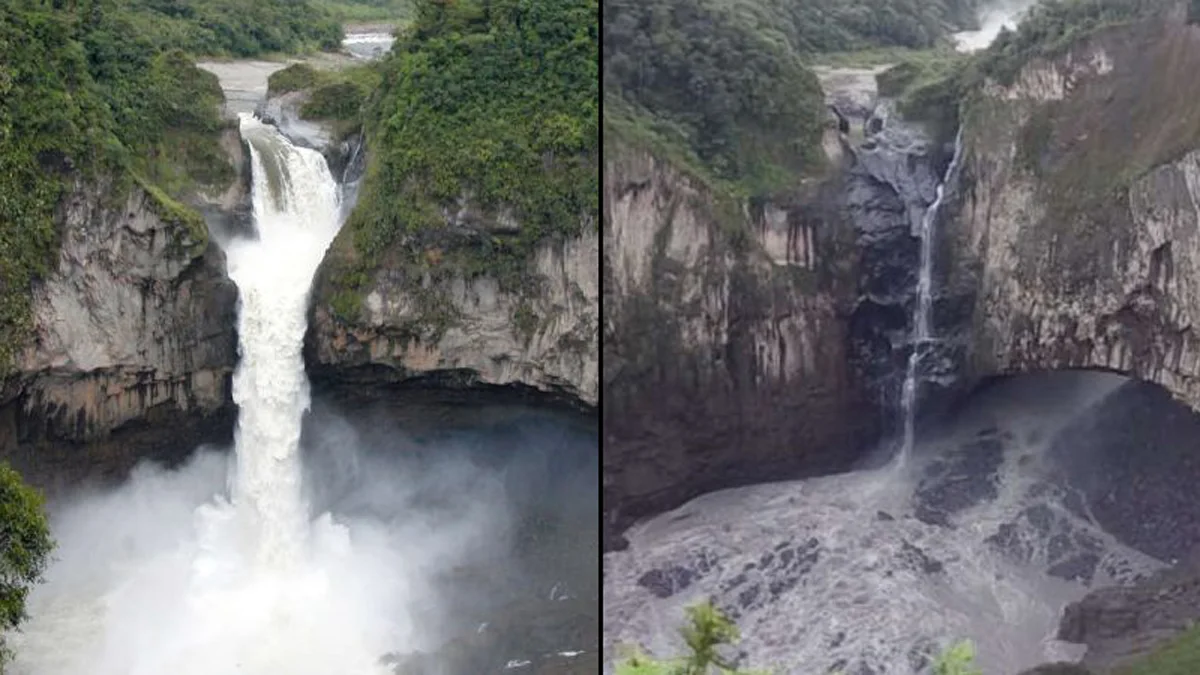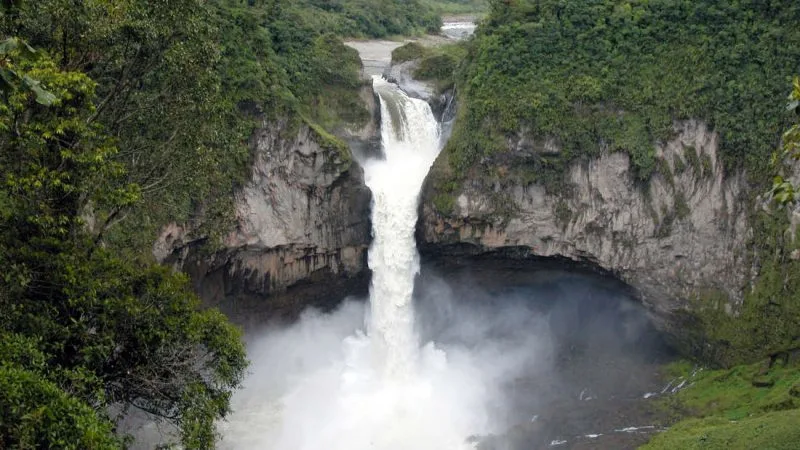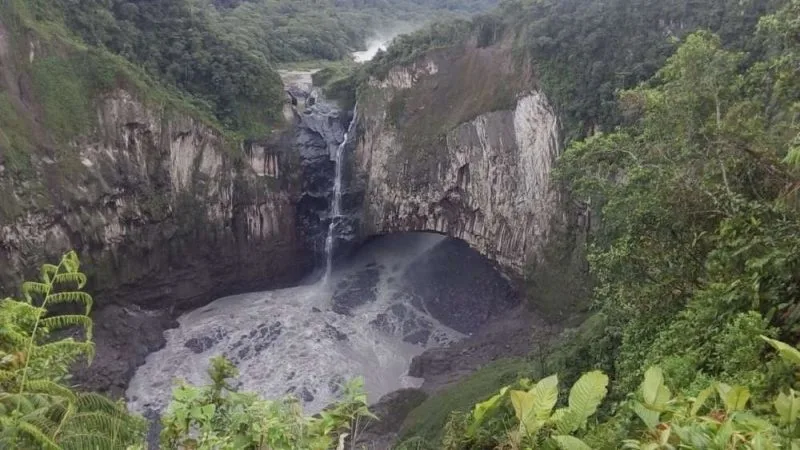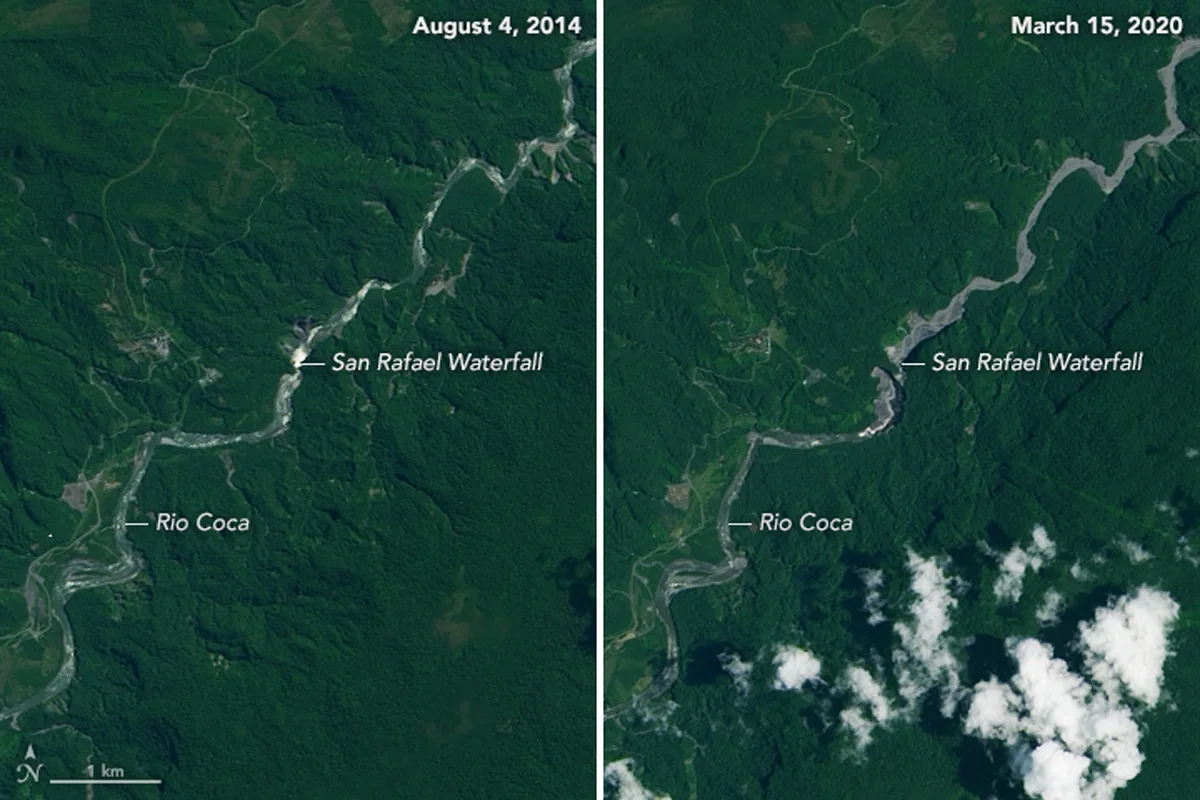
Immense sinkhole causes Ecuador's tallest waterfall to suddenly vanish
The San Rafael Falls, one of Ecuador's most amazing natural wonders, is gone after an 'implosion'
The San Rafael Falls was once the tallest waterfall in Ecuador. Now, its flow has reduced to a mere trickle following the collapse of a giant sinkhole.
The roar of the Coco River plunging off the 150-metre tall cliff of the San Rafael Falls once drew tens of thousands of visitors every year to northern Ecuador's Cayambe Coca Ecological Reserve. On February 2, 2020, however, a large sinkhole suddenly collapsed just upstream from the falls' precipice.
"Due to the constant rains in the province of Sucumbíos, the San Rafael Waterfall, one of the most important attractions, suffered a kind of implosion affecting its natural channel," the Ministry of the Environment for the province of Sucumbíos (Sucumbíos MAE) posted on their Facebook account.
As a result of this 'implosion', the flow of the Rio Coco instantly diverted underground. Only a tiny stream of water was left flowing down the face of the original falls.

Photo of the San Rafael Falls from 2012. Credit: Ecuador Ministry of Tourism

This photo was taken in February 2020, after the sinkhole collapse. Credit: Ecuador Ministry of the Environment
"Unfortunately, Cascada San Rafael is now part of history and will not return," a Ministry of the Environment spokesperson said, according to CuencaHighLife.com.
Video of the sinkhole collapse showed up on social media the day after it occurred.
Another video, shot by Biologist Luis Fernando Tonato upstream from the original falls, shows the current flow of the Rio Coco as it cascades down through broken formations.
Of particular note, in Tonato's second video, is the extensive gorge that has been created by the collapse. The current 'fall' of the river would appear to be well back from the original falls' location.
Recently, NASA obtained satellite imagery of the region, which the agency then compared with older imagery from 2014.

Landsat 8 images from August 4, 2014, and March 15, 2020 show how the view of San Rafael Falls from space has changed. Credit: NASA's Earth Observatory
As shown in the two images above, gone now is the huge plume of mist that was once produced by the waterfall. The view now shows a natural bridge left behind just south of the fall's original position, with an immense sinkhole having drastically changed the upstream landscape.
According to NASA's Earth Observatory: "Now, the water falls in three separate sections and at a less steep slope, which cannot be seen from viewing stations located around the original waterfall. Researchers believe the three streams could cause erosion at the channel's origin and create a river upstream, which might change the topography of the valley."
WHAT CAUSED THIS?
There is currently a split among scientists about what caused the sinkhole to form.
Some see it as a wholly natural event, simply caused by the natural erosion of the riverbed behind the falls, coupled with the increased flow of the river due to intense rainfall. Others point to the potential effects of the Coca Codo Sinclair hydroelectric plant, roughly 20 kilometres upstream from San Rafael.
Rivers waters naturally carry a certain amount of sediment downstream, however dams tend to collect sediment from the waters that pass through them. Downstream of the power plant, therefore, this 'cleaner' water would tend to lift more sediment than it usually would from the river bed.
"When a river loses sediments, water increases its erosive capacity, an effect called 'hungry waters'," Emilio Cobo, from the International Union for the Conservation of Nature (IUCN), told Mongabay.org. "All rivers carry eroded sediments from the soils and rocks on which they pass. All dams and reservoirs trap part of this sediment, especially heavy materials, and thus deprive the downstream river of its normal sediment load."
There's no way to be sure what the exact cause is. Still, Cobo believes it is no coincidence that a waterfall that has lasted for thousands of years suddenly changes this much just a few years after construction begins on a nearby hydroelectric plant.
Sources: NASA Earth Observatory | Sucumbíos MAE | Mongabay.com | CuencaHighLife
